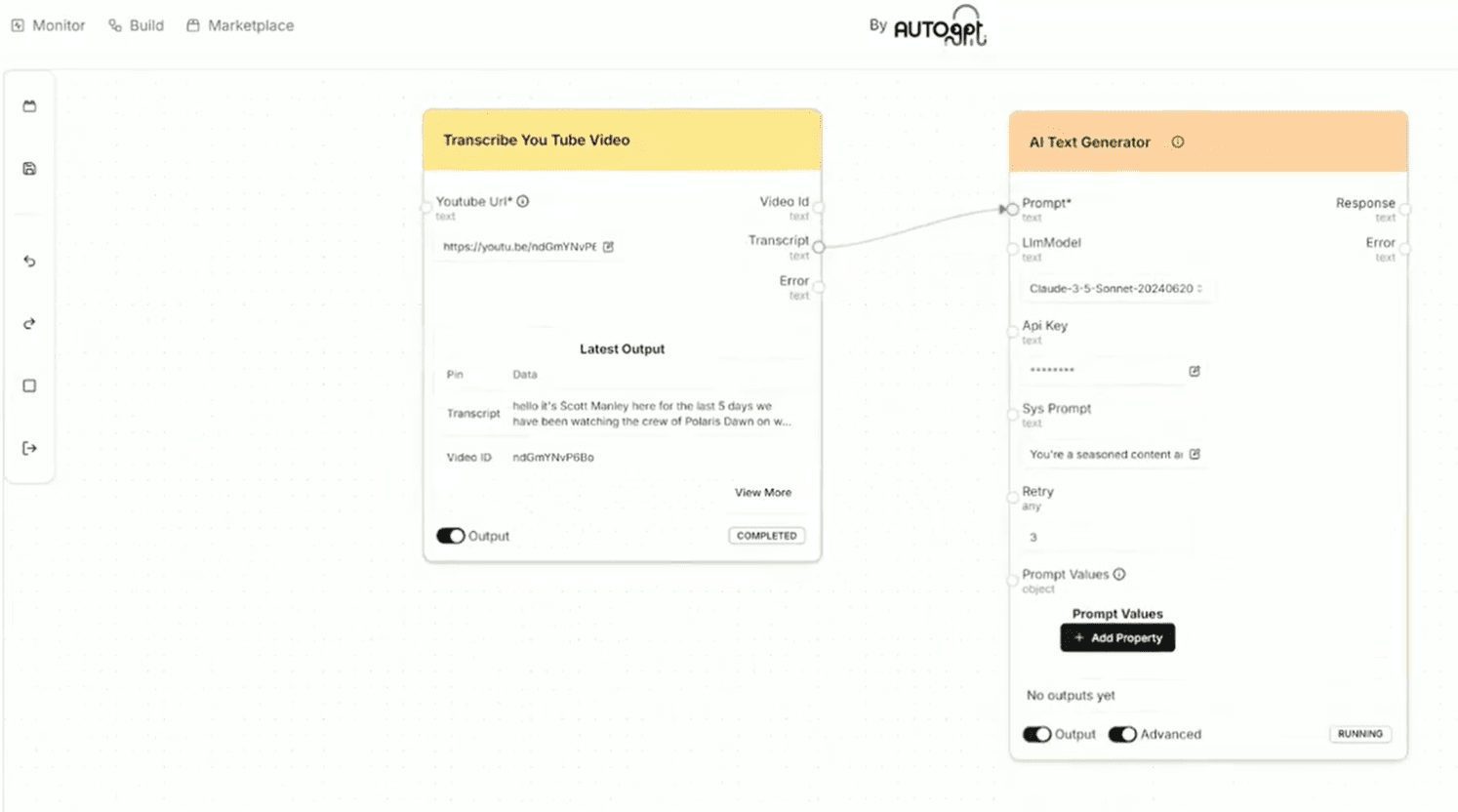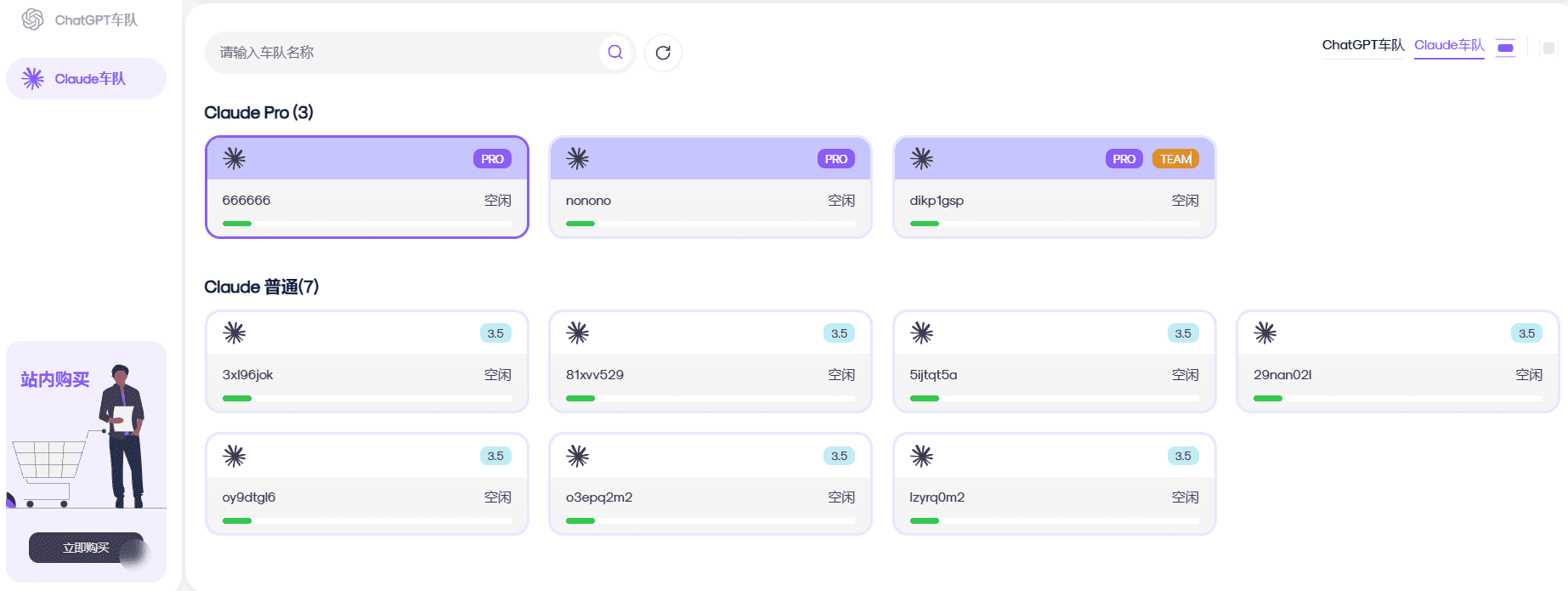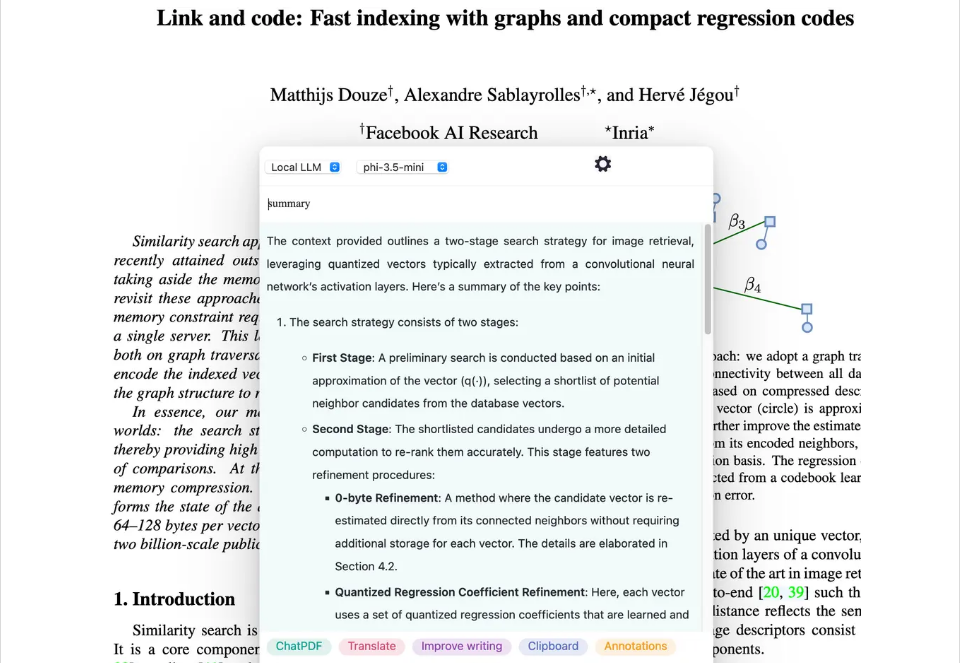AutoGPT: Intelligent Body Building Platform for Workflow Automation and Autonomous Task Execution
General Introduction
AutoGPT is a powerful platform designed to help users create, deploy and manage continuously running AI agents and automate complex workflows. Developed by Significant Gravitas, the platform offers a wide range of tools and features that enable users to focus on important tasks without worrying about the technical details.AutoGPT supports both self-hosted and cloud-hosted modes, allowing users to choose the one that suits their needs. The platform's user-friendly front-end interface provides low-code agent building tools, workflow management, deployment control, monitoring and analytics to help users easily automate AI.

Function List
- proxy builder: Provides an intuitive low-code interface that allows users to design and configure their own AI agents.
- Workflow management: Easily build, modify and optimize automated workflows.
- Deployment control: Manage the agent lifecycle from test to production environments.
- Pre-Configured Agents: Provides pre-configured agent libraries that users can use directly.
- agent interaction: Run and interact with customized or pre-configured agents through a user-friendly interface.
- Monitoring and Analysis: Track agent performance and gain insights to continuously improve automation processes.
- Server-side support: Strong backend support is provided to ensure smooth operation of the agent.
Using Help
Installation process
- Self-hosted installation::
- Make sure Docker, VSCode, git and npm are installed.
- Clone the AutoGPT repository:
git clone https://github.com/Significant-Gravitas/AutoGPT.git - Go to the project catalog:
cd AutoGPT - Build and launch with Docker:
docker-compose up --build - Open your browser to visit the local address and start using AutoGPT.
- Cloud Hosting Installation::
- Join the Cloud Hosting Beta waiting list for notification.
- Set up and use according to the guidelines provided.
Guidelines for use
- proxy builder::
- Open the AutoGPT front-end interface and select "Agent Builder".
- Use the drag-and-drop interface to add and configure different functional modules and build custom agents.
- Save and deploy the agent to start automating the task.
- Workflow management::
- Access the Workflow Management module to create new workflows or modify existing ones.
- Use a modular approach to add steps, each of which performs a specific action.
- Save workflows and run them to monitor their execution.
- Deployment control::
- Manage different versions and environments of the agent in the Deployment Control module.
- Perform test deployments to ensure that the agent runs stably in the production environment.
- Pre-Configured Agents::
- Browse the library of pre-configured agents and select the appropriate one.
- Save time and effort by deploying and running directly.
- agent interaction::
- In the front-end interface, select the deployed agent for interaction and control.
- View the real-time status and execution results of the agent.
- Monitoring and Analysis::
- Go to the Monitor and Analyze module to view agent performance data.
- Optimize agents and workflows to improve efficiency based on analytics.
What is Agentic AI?
Agentic AI, also known as agent-based AI or autonomous AI, refers to artificial intelligence systems that can operate independently to achieve specific goals. Unlike traditional AI systems, Agentic AI is able to adapt to changing environments and make decisions without constant human intervention.
Agentic AI features include:
- Autonomous task execution and decision-making
- Adapting to changing environments and learning from experience
- Interact with other systems or agents to achieve complex goals
- Demonstrate goal-oriented behavior and problem-solving skills
Unlike traditional rule-based systems, Agentic AI utilizes advanced machine learning techniques such as deep learning and reinforcement learning to develop complex decision-making capabilities.
Core Components of the Agentic AI System
The concept of Agentic AI is built on multiple interconnected components that work in concert to create intelligent, autonomous behavior. Understanding these core components helps explain how these systems operate independently and adapt to changing conditions. The core components include:
- sensorimotor: Acts as a sensory interface for the system to interact with the environment. It continuously collects real-time data from a variety of sources and processes structured and unstructured information to maintain a sense of the system state. This module must effectively filter relevant data from environmental noise to ensure that the agent has an accurate and up-to-date understanding of its surroundings and context.
- decision engine: The brain of the system, analyzing and processing data to determine the best course of action based on defined goals. It utilizes sophisticated AI models to evaluate potential actions and their outcomes, and is capable of responding to complex decision-making scenarios. This module prioritizes actions based on expected impact and alignment with the system's goals, ensuring that the best choice is made in each situation.
- Operational implementation: Represents the ability of the system to implement selected decisions through multiple channels. This module not only executes actions, but also monitors their progress and effectiveness in real time. It is able to deal with error conditions and unforeseen situations and, if necessary, coordinate multiple actions to achieve the desired results.
- Learning mechanisms: Enables the system to continuously improve through experience. It continuously updates the knowledge base with new information and optimizes decision-making strategies based on observed results. This module adapts to changing patterns and conditions and improves system performance through accumulated experience and result analysis. This enables the agent to plan the steps required to achieve the desired results.
- communications interface: Facilitates critical interactions between different agents and human operators. It maintains protocols for efficient data exchange and ensures a smooth flow of information between all system components. This interface is essential for coordinating actions, sharing insights, and maintaining efficient collaboration between AI and human intelligence.
- target management: Acts as a strategic compass for the system, defining and tracking goals while balancing competing priorities. This module continuously adjusts goals in response to changing conditions while maintaining alignment with the overall mission. It ensures that all system actions meaningfully contribute to the achievement of desired outcomes.
These components work together in a continuous loop, enabling the system to move from simple task automation to complex problem solving. As Agentic AI systems continue to evolve, they are finding applications in a variety of domains, including process automation, robotics, self-driving cars, intelligent infrastructure management, financial transactions, and healthcare operations. The complexity of these components determines the ability of agents to handle complex problems and adapt to new environments, making them a key element in the design of efficient Agentic AI systems.
Understanding Agentic Process Automation
Agentic Process Automation (APA) refers to a sophisticated automation approach to managing and optimizing business workflows using autonomous AI agents. Unlike traditional automation that follows fixed rules, APA systems are able to sense, decide, and act independently within a business process while continuously learning and adapting to new situations. These systems combine the efficiency of automation with the intelligence of AI, creating the potential for more flexible and efficient business operations.
How Agentic AI Transforms Traditional Process Automation
APA represents a fundamental shift in the way organizations approach automated processes. While traditional systems rely on predefined scripts and manual oversight, APA systems analyze situations, make informed decisions, and adjust their approach in real time. This evolution enables organizations to automate complex tasks that previously required constant human intervention, from complex data analysis to detailed customer interactions. The key difference is APA's ability to cope with uncertainty and variability-situations that often cause traditional automation to fail or require manual intervention.
© Copyright notes
Article copyright AI Sharing Circle All, please do not reproduce without permission.
Related posts

No comments...




